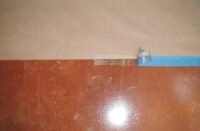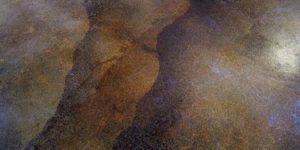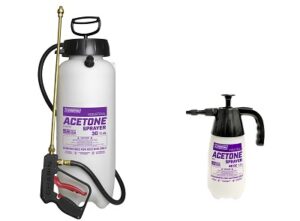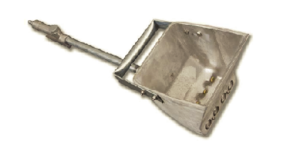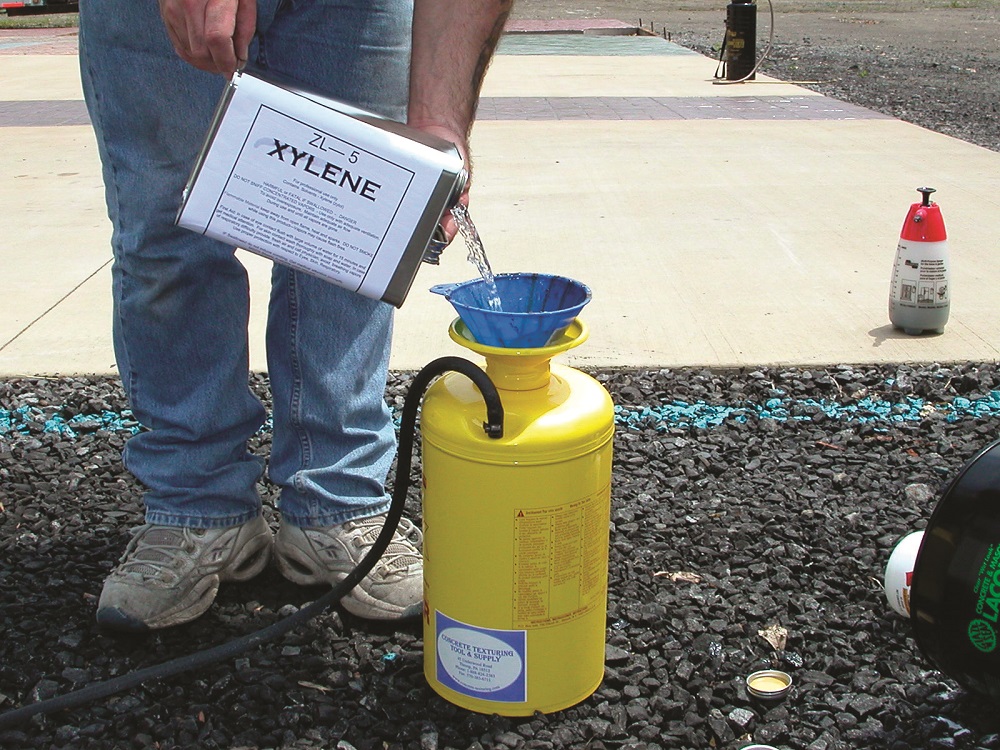
Sprayers can be a real pain in the neck when they don’t work right, so I’d like to share a procedure that has worked well for us through the years when cleaning a pump sprayer. This technique was developed after throwing away a mountain of spent sprayer cans!
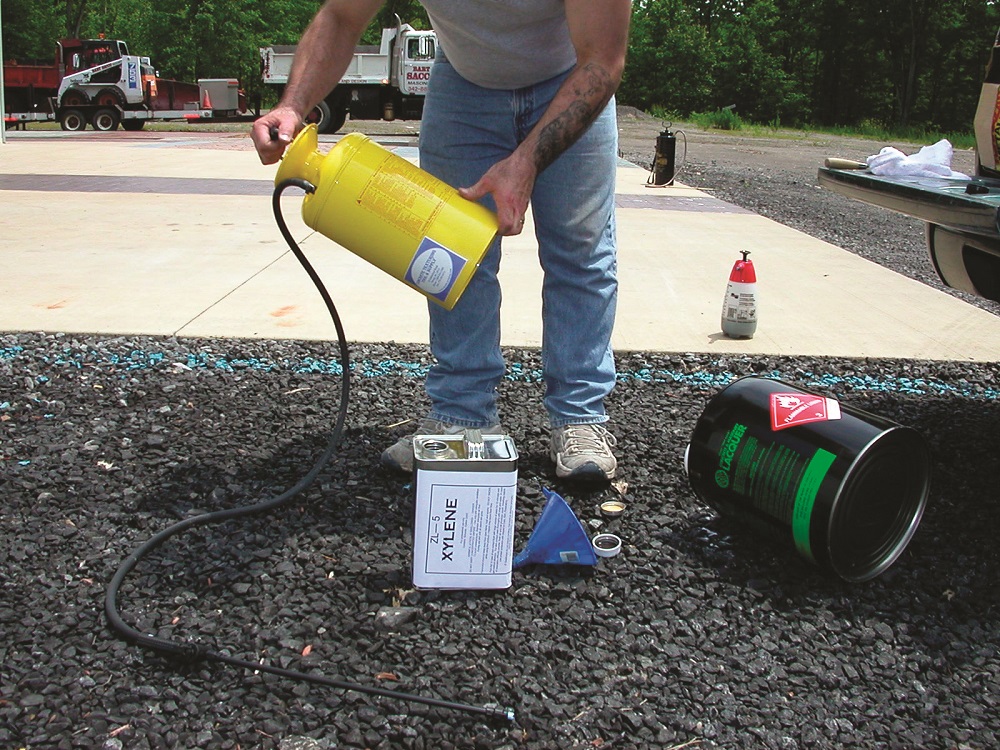
We always use separate sprayers for solvents and water-base materials. I guess you can use the same one for both, but it seems to work better to keep them separate. Also, that way you’ll usually have an extra unit if you’re out in the middle of nowhere and your sprayer quits working.
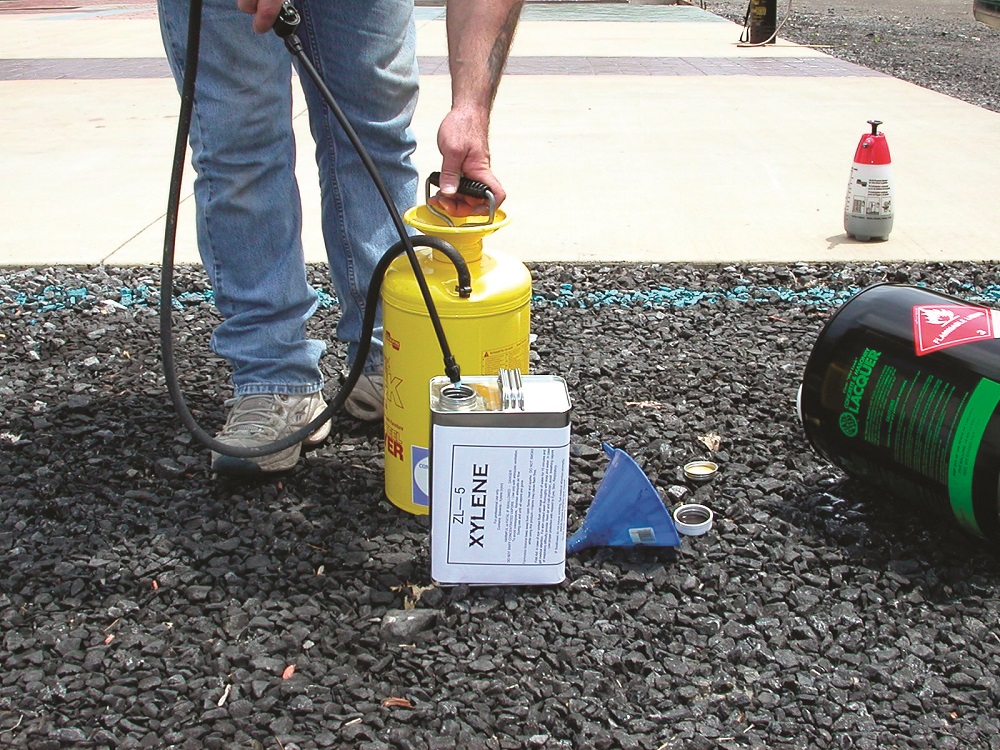
We always clean the sprayer with xylene after using high-gloss sealers. Another quick tip: While you’re refilling your sprayer tank, park or rest your sprayer wand in the gallon of xylene. This will melt off excess buildup on the tip and you will be ready to go when you’re filled. Many times I have filled up the tank, got ready to spray, and — nothing. Now you’re at a standstill — cleaning the tip. You get the idea.
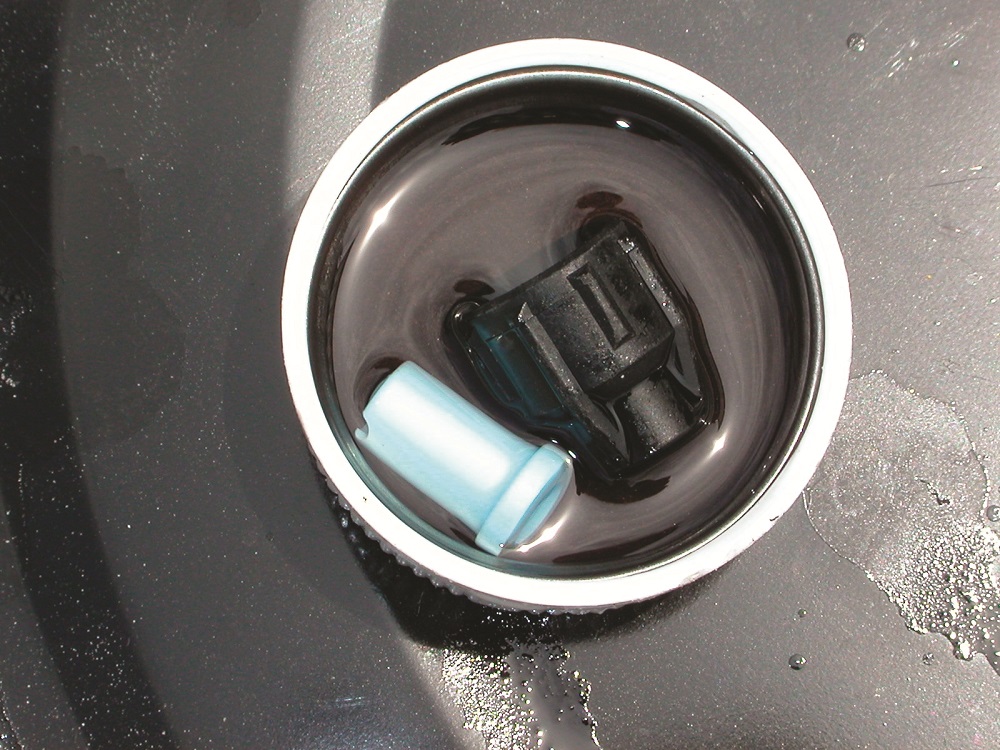
Okay, back to the cleaning. When you are done with the high-gloss sealer, empty out the unused sealer and then dump the gallon of xylene (or your favorite cleaning solution) in the tank (1), shake around a bit (2), pump up and discharge back into the original xylene container (3). You can reuse the xylene again and again. The spent waste residue of the sealer will settle in the bottom in the xylene can and you can discard the waste the next time you use the cleaning material.

We usually run a little through the fan tip and then remove the tip to discharge mass volume into the xylene container. Next we hold the sprayer wand vertically and open the valve to drain the tube (5). Dump any remaining cleaning material out of the sprayer tank. Wipe down plunger, seals and the sprayer tank at the seal contact area.
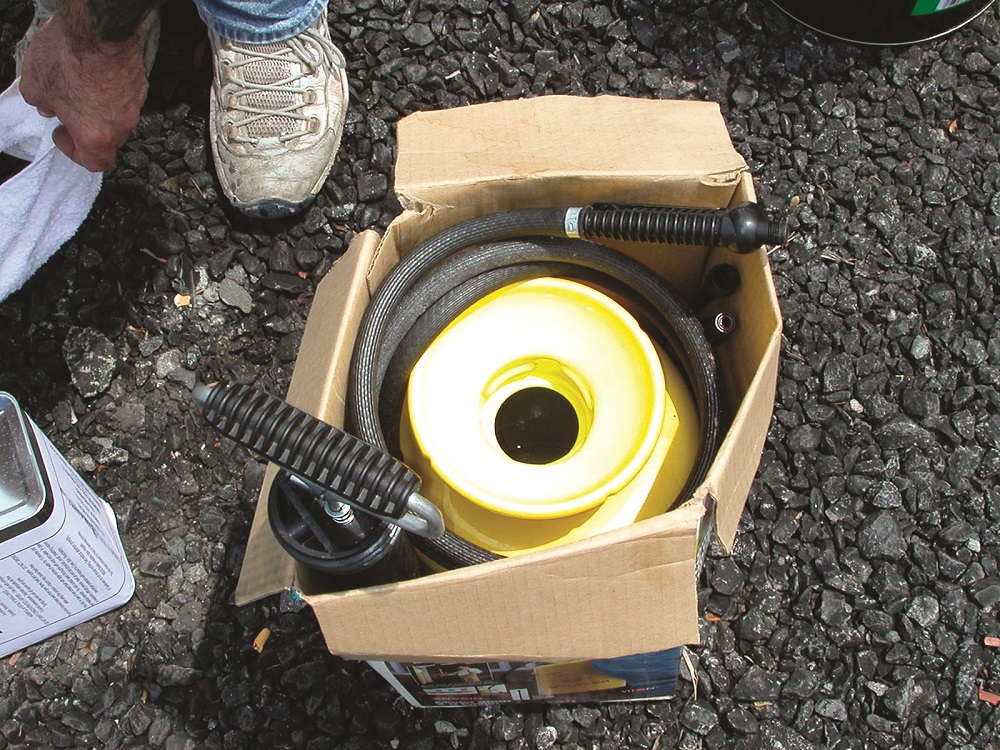
Now the most important part
Leave the plunger out of the tank overnight to allow the vapors to escape (6). The next morning put the plunger back in the tank to keep the dirt out. If you allow the xylene or the vapors to stay in the sprayer tank without allowing the vapors to evaporate, you will ruin the seals.
They will swell and not perform as well.
Note: Follow the same procedure for water-base material, but clean immediately after use with warm water instead of solvent.
Good luck on all your decorative projects!
Questions from readers
Question
Do I need to rinse out my sprayer after xylene clean-up?
Answer from Concrete Decor
If you have thoroughly flushed out the pump and cleaned the spray tip you can simply open the container and let it air dry. It’s often a good idea to take a little vaseline and rub that on o-ring seals so they stay nice and limber.


